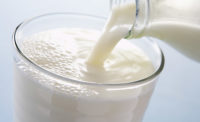Children are the root of our tomorrow. We want them to succeed and to grow up to be strong, smart and healthy adults. Health and wellness professionals and organizations encourage children and adolescents to be physically active and eat healthy foods so that they can reach their full potential. Eating a healthy diet, including foods from all food groups, is critical to help children fuel their growing bodies with the appropriate nutrients. One of these important nutrients is protein.
What is protein?
Protein is the building block of life. Every cell in the human body contains protein. It is an essential nutrient required for bone and muscle health, proper immune function, the production of hormones, antibodies and enzymes as well as many other critical functions within the body. During infancy, childhood and adolescence, meeting protein needs is especially important to accommodate rapid growth and development — by 2 years of age a child is typically half of their adult height and by 5 years of age 90% of their adult brain has been developed.
How much protein do children need?
The Institute of Medicine recommends that children 3 and older consume 10% to 30% of their calories from protein. Per these recommendations, the Recommended Dietary Allowance (RDA) states that children 4-8 years of age should eat about 19 grams of protein per day, children 9-13 years of age should eat around 34 grams protein per day, while teenage boys and girls (14-18 years of age) should consume about 52 grams and 46 grams, respectively. To put this into perspective this table (embedded above) highlights how much protein can be found in one serving of some commonly consumed foods.
Are children meeting protein needs?
When looking at the current intake of protein (excluding beans and peas), about 30% of children 4-8 years of age are consuming below the recommendations for protein. As kids get older they eat even less protein, with roughly 50% of children 9-13 years of age not meeting recommendations.
Dairy foods offer solutions
Dairy foods are not always thought of first when it comes to protein. In fact milk, cheese and yogurt are a source of high quality protein. One cup (8 ounces) of milk provides 8 grams of protein and includes all nine essential amino acids.
What are essential amino acids? Once protein is consumed, the body breaks it down into amino acids which are reassembled in a variety of ways and become the building blocks of the structural components of cells, enzymes and muscle. There are many types of amino acids, some which our bodies can make on their own, and nine that our bodies cannot make. These nine amino acids are known as essential amino acids, because they must come from the diet and dairy delivers them all.
In fact, just recently the Food and Agriculture Organization of the United Nations/World Health Organization recommended a new method for dietary protein quality assessment known as digestible indispensable amino acid score (DIAAS). This would replace the existing method known as Protein Digestibility Corrected Amino Acid Score (PDCAAS). Importantly, the DIAAS method better differentiates the quality of protein in food sources. In recent research, dairy-derived proteins have shown to be the highest quality.
Dairy offers what kids need
Milk is the number one food source of nine essential nutrients for children. In addition to protein, milk provides calcium, potassium, phosphorus, vitamins A, D, B12, riboflavin and niacin or niacin equivalents. Dairy foods also provide three of the four nutrients of public health concern identified by the Dietary Guidelines for Americans (DGA), which are calcium, potassium and vitamin D.
The DGA recommends three daily servings of dairy such as low-fat and fat-free milk, cheese or yogurt for Americans nine years of age and older. The daily recommendation for children ages 2-3 and ages 4-8 is 2 cups and 2.5 cups, respectively. To meet calcium requirements, the American Academy of Pediatrics recommends four servings of dairy products per day for adolescents. However, the DGA points out that children 4 years of age and older do not meet dairy recommendations.
Making shifts in eating habits to include more dairy foods like milk, cheese and yogurt is a great way to support children in meeting the nutrient needs their growing bodies require.





